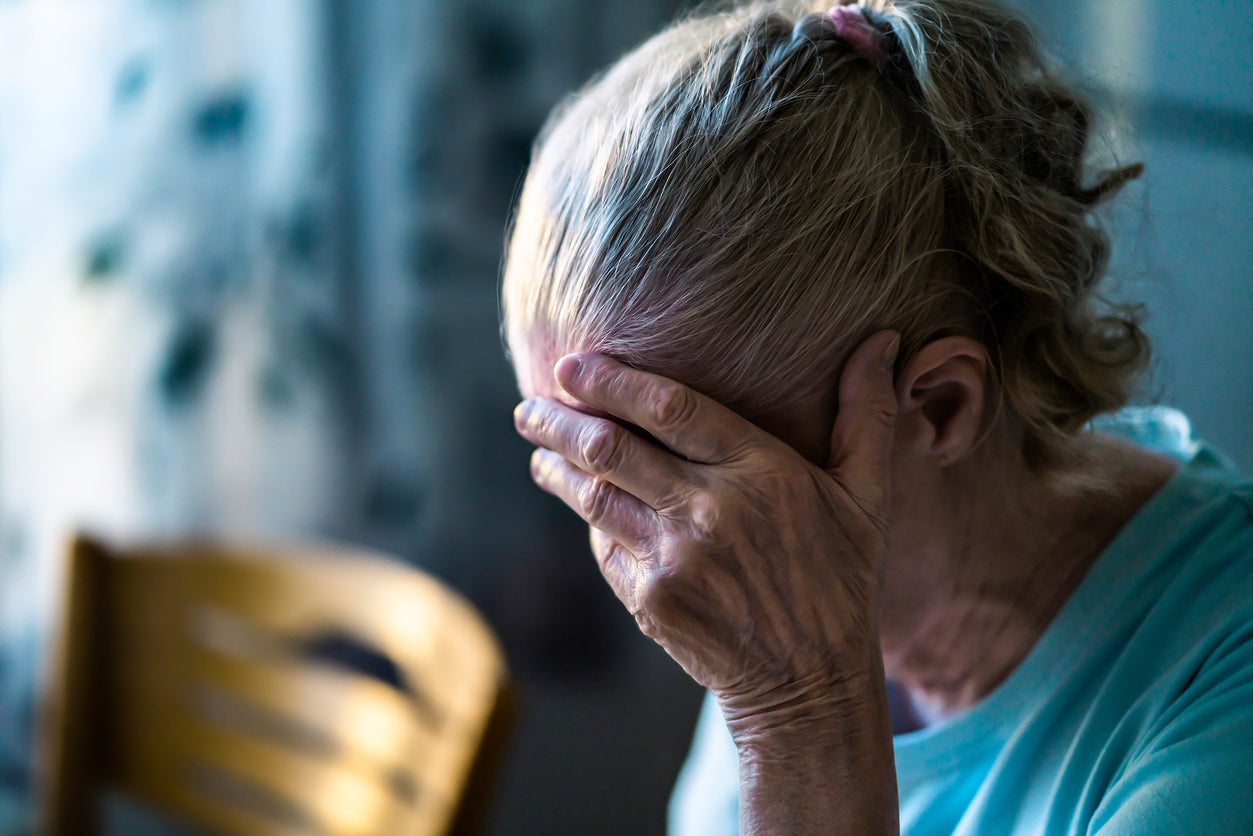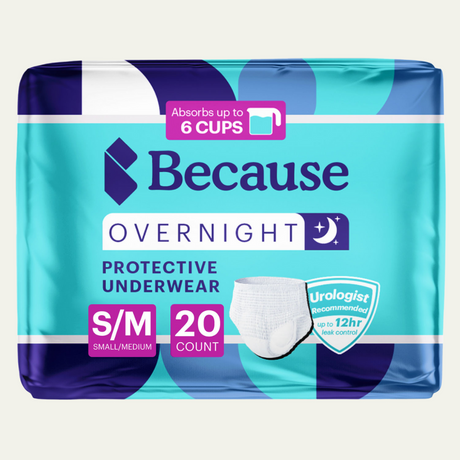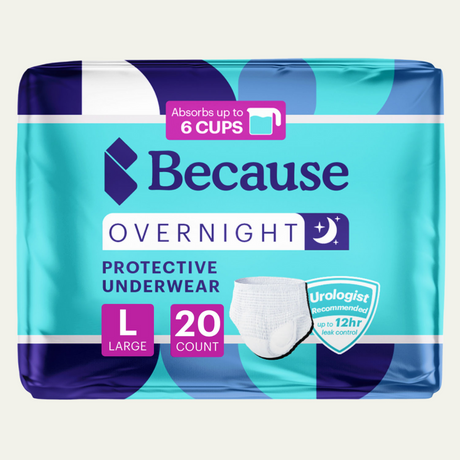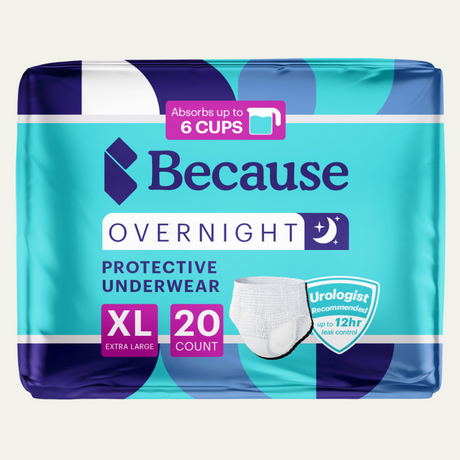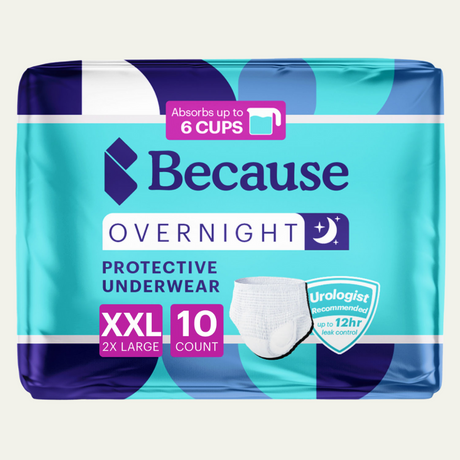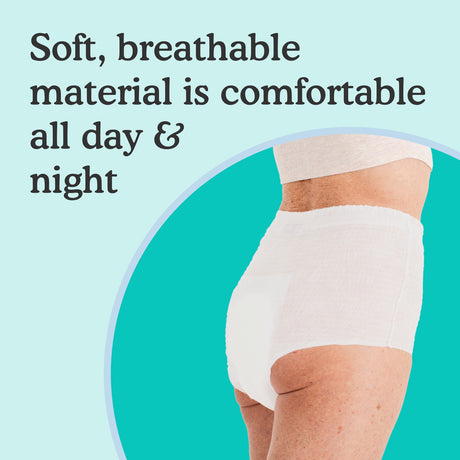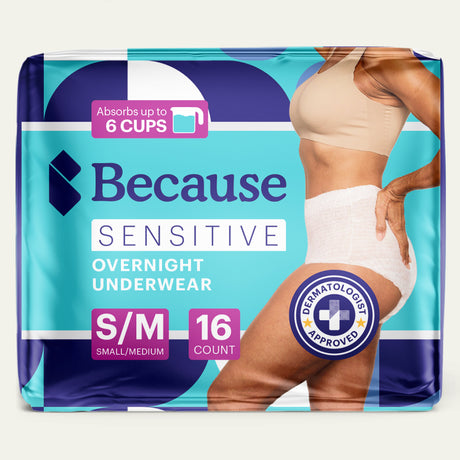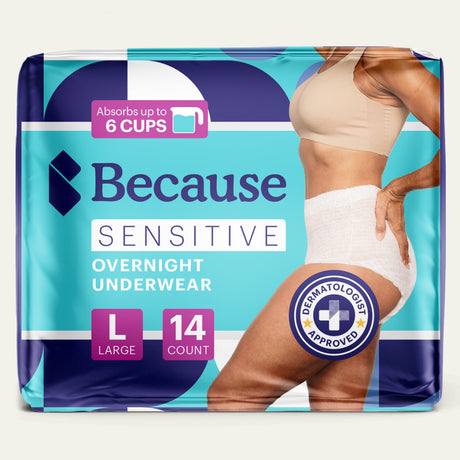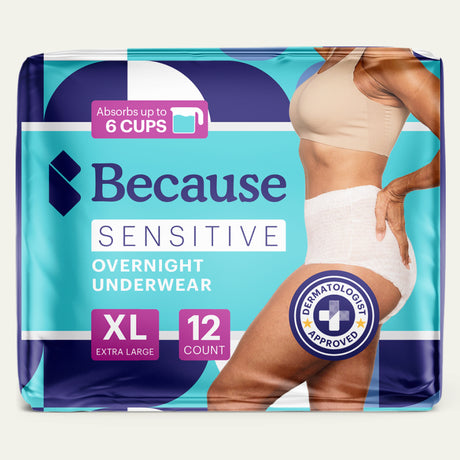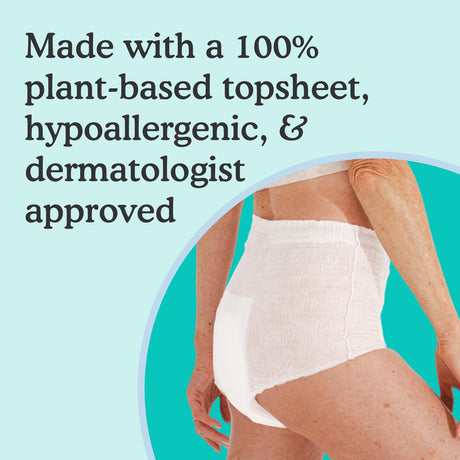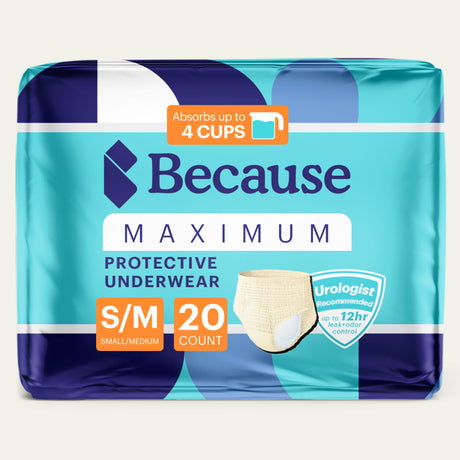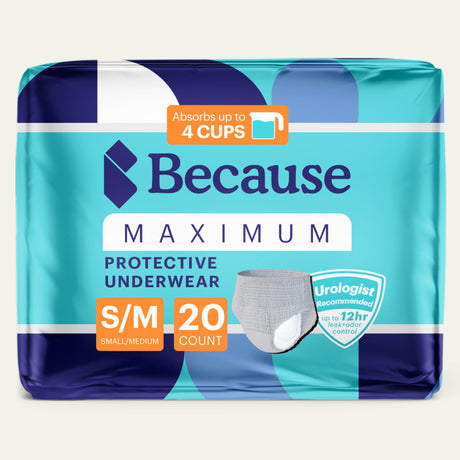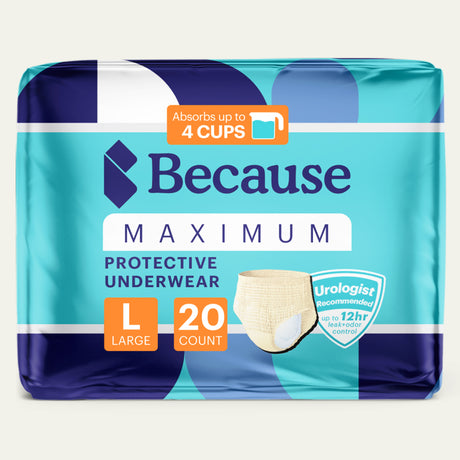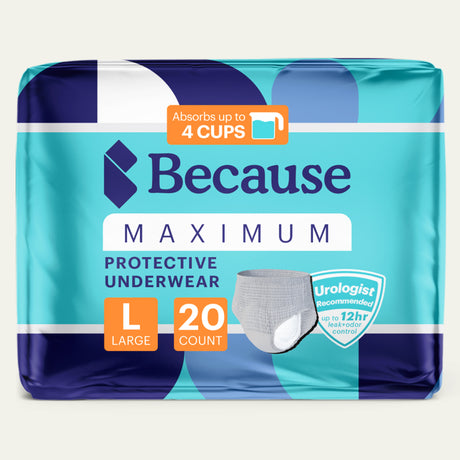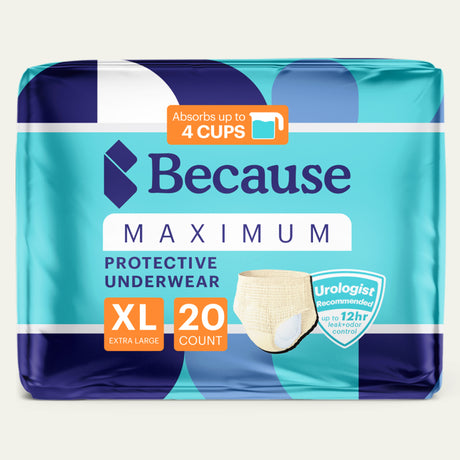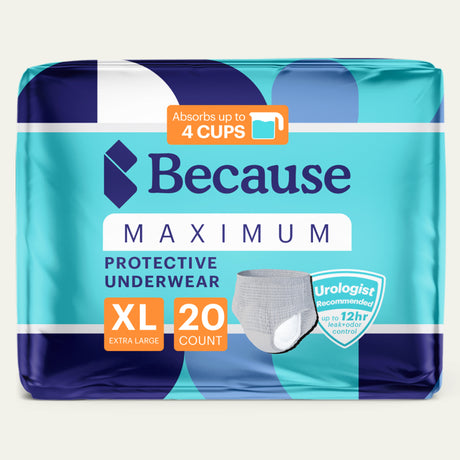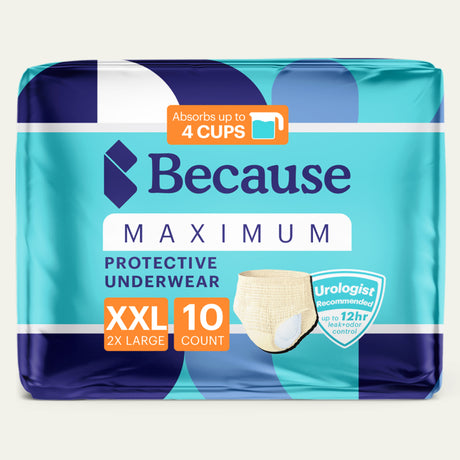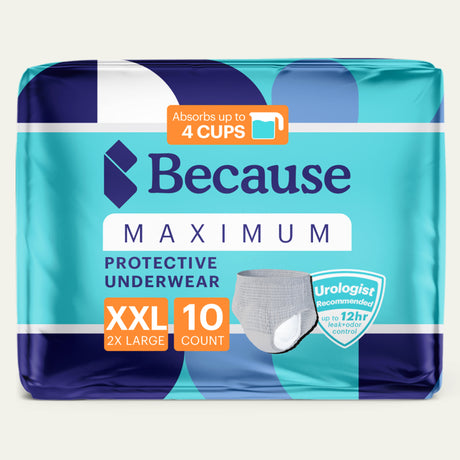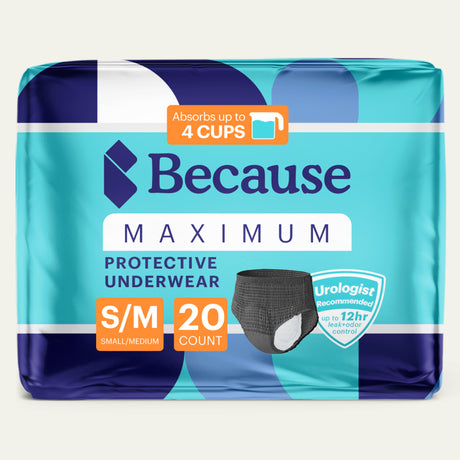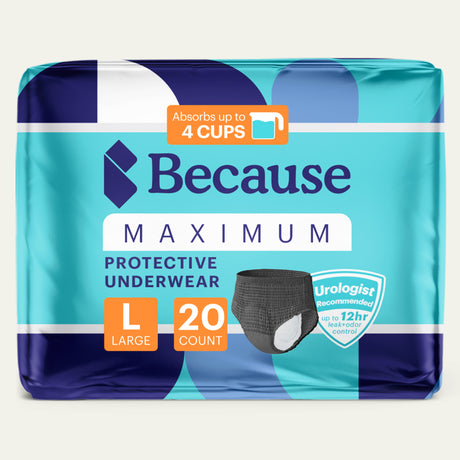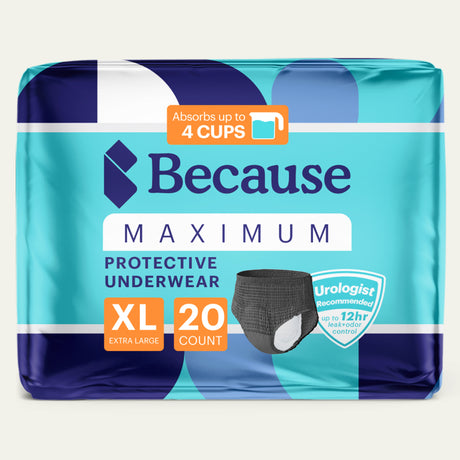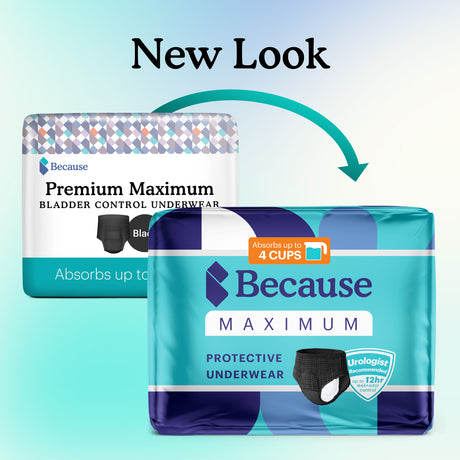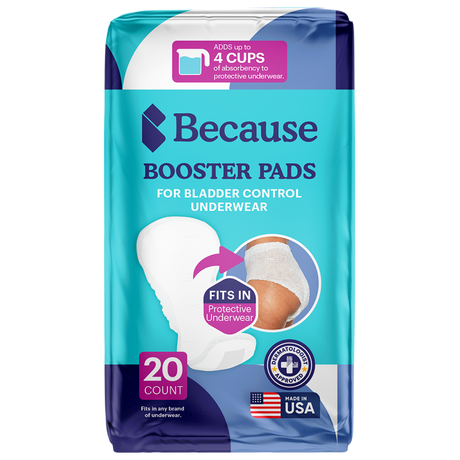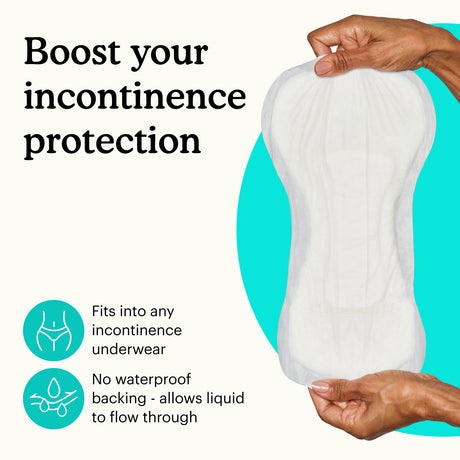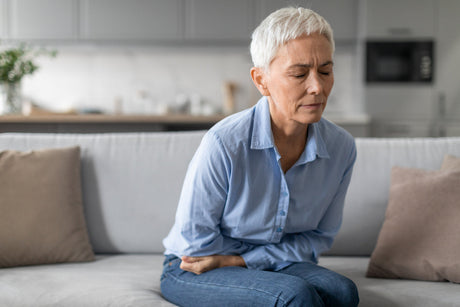Severe urinary incontinence can feel like a secret you carry, a burden that weighs you down. But it doesn't have to be that way. Because believes in open, honest conversations about bladder health, and we're here to provide you with the information and support you need to manage your condition effectively. In this comprehensive guide, we'll explore the causes of severe urinary incontinence, discuss practical management strategies, and offer insights into choosing the right products for your needs. We'll also address the emotional and social aspects of living with urinary incontinence, providing you with the support and encouragement you deserve. Let's break the silence surrounding urinary incontinence and empower you to live a fulfilling life, free from shame and limitations.
Key Takeaways
- Severe urinary incontinence isn't something you have to simply endure: Combining lifestyle changes, finding the right products, and consulting a healthcare professional can significantly improve your comfort and quality of life.
- Knowledge is power when it comes to managing urinary incontinence: Understanding the causes, recognizing your symptoms, and seeking professional medical advice are crucial for effective management.
- You're not alone in this journey: Connecting with others, exploring available resources, and building a strong support system can empower you to navigate the challenges of urinary incontinence and live a fuller life.
What is Severe Incontinence?
Urinary incontinence, sometimes called simply incontinence, is the loss of bladder control. This can range from occasional, small urine leaks to a complete inability to hold urine. It affects millions of people, and while it can be frustrating, understanding the condition is the first step toward managing it. Severe incontinence, in particular, involves a substantial loss of bladder control, significantly impacting daily life. It's more than just an occasional drip; it's frequent and often unpredictable leakage of larger volumes of urine. This can stem from a variety of factors, including certain medical conditions, medications, or even lifestyle habits.
It's important to remember that while urinary incontinence can be a challenge, it's not something you have to simply live with. Many effective strategies and products can help you regain control and confidence. Because we understand the impact urinary incontinence can have, we're dedicated to providing resources and solutions to help you manage this condition and live your life to the fullest. Don't let misconceptions hold you back—effective management is possible, and we're here to support you. It's crucial to understand that urinary incontinence isn't just a normal part of aging; it's a medical condition that can be addressed. Seeking professional medical advice is a key step in understanding the cause of your incontinence and finding the right treatment plan. With the right information and support, you can regain control and improve your quality of life.

Types of Urinary Incontinence
Understanding the different types of incontinence is crucial for managing severe symptoms effectively. While all forms involve loss of bladder control, the causes and characteristics can vary significantly. Identifying the specific type helps guide treatment options and improve quality of life.
Stress Incontinence
Stress incontinence occurs when physical movements or activities, such as coughing, sneezing, laughing, or lifting heavy objects, put pressure on the bladder, causing unintended urine leakage. It typically results from weakened pelvic floor muscles or a compromised urethral sphincter, often due to aging, childbirth, or surgery. While mild cases may involve occasional leaks, severe stress incontinence can lead to frequent, uncontrolled urine loss, significantly impacting daily life. In advanced cases, even minimal exertion can cause you to leak urine, making it difficult to manage without protective products or medical intervention.
Urge Incontinence
Urge incontinence, a type of incontinence frequently associated with overactive bladder (OAB), is characterized by a sudden, intense need to urinate, often resulting in involuntary leakage before reaching a restroom. It occurs when the bladder muscles contract uncontrollably, even when the bladder isn’t full, and can be triggered by factors such as neurological conditions, bladder irritation, or aging. In severe cases, individuals may experience frequent, unpredictable urges throughout the day and night, making it difficult to engage in daily activities without constant concern. This level of incontinence can lead to significant disruptions in sleep, work, and social interactions, as well as an increased reliance on absorbent products.
Overflow Incontinence
Overflow incontinence occurs when the bladder does not empty completely, causing a person to leak urine. This condition is often caused by a blockage, an enlarged prostate, weak bladder muscles, or nerve damage from conditions such as diabetes, multiple sclerosis, or spinal cord injuries. In severe cases, the bladder becomes chronically overfilled, resulting in continuous urine leakage and a high risk of urinary tract infections. Individuals with severe overflow incontinence may struggle with significant discomfort, frequent nighttime urination, and difficulty sensing when their bladder is full. Without proper management, this condition can severely impact daily life and lead to complications like bladder damage or kidney problems.
Mixed Incontinence
Mixed incontinence is a combination of two or more types of incontinence, most commonly stress incontinence and urge incontinence. Individuals with this condition experience both sudden urges to urinate and leak urine during physical activities like coughing, sneezing, or lifting. Severe cases can lead to frequent, unpredictable accidents that make daily life challenging and require constant management.
Functional Incontinence
Functional incontinence occurs when a person has normal bladder function but is unable to reach the restroom in time due to physical or cognitive impairments. Conditions such as arthritis, Parkinson’s disease, dementia, or mobility issues can prevent timely bathroom access, leading to frequent accidents. In severe cases, individuals may be entirely dependent on caregivers or incontinence products to manage their symptoms.
Reflex Incontinence
Reflex incontinence occurs when the bladder empties involuntarily due to nerve damage, often without warning or the sensation of needing to urinate. It is commonly associated with spinal cord injuries, multiple sclerosis, or neurological disorders that disrupt the communication between the brain and bladder. Severe cases can result in complete loss of bladder control, leading to frequent, uncontrolled urine leakage throughout the day and night. Because individuals may not feel the urge to urinate, they are at a higher risk of complications such as urinary retention, infections, and kidney damage.

What Causes Severe Incontinence?
Understanding the underlying causes of severe incontinence is the first step toward effective management. Several factors can contribute, and it's often a combination of issues rather than a single cause. Let's explore some of the most common culprits.
Medical Conditions
Various medical conditions can increase your risk of developing urinary incontinence. Chronic conditions like diabetes and heart failure can play a role, as can neurological conditions like dementia. Even easily treatable conditions, such as urinary tract infections (UTIs) and constipation, can cause bladder control problems leading to incontinence. This irritation triggers strong, sudden urges to urinate that can be difficult to control.
Medication Side Effects
Certain medications, while beneficial for other health concerns, can sometimes have the unintended side effect of worsening urinary incontinence. For example, some antidepressants can affect bladder function, making it harder to empty completely. Alpha-blockers, commonly prescribed for high blood pressure, can also relax the urethra, increasing the risk of leaks. It's crucial to discuss any incontinence issues with your doctor, as they may be able to adjust your medication or suggest alternatives. Never stop taking prescribed medication without consulting your doctor first.
Age-Related Changes
While not an illness itself, aging can bring about physical changes that make incontinence more likely. As we age, the pelvic floor muscles that support the bladder can weaken. A common cause of age-related incontinence is menopause. The decline in estrogen that occurs during and post-menopause can result in weakened pelvic floor muscles, thinning of the vaginal lining, and overactive bladder. This can make it harder to control urination. This is a natural process, but it doesn't mean incontinence is inevitable. Understanding these changes and adopting proactive strategies, such as pelvic floor exercises, can help you maintain bladder control as you get older. It's important to remember that incontinence isn't just a consequence of aging; it's a medical condition that can be addressed, regardless of your age. Many effective treatments and management strategies are available to help you maintain an active and fulfilling life.
Recognize the Signs of Severe Incontinence
Understanding the signs of severe urinary incontinence is the first step toward effectively managing the condition and improving your quality of life. While occasional leaks happen, severe incontinence presents more persistent and disruptive challenges. Let's explore some key indicators:
Frequency and Urgency
A telltale sign of severe incontinence is the frequent and urgent need to urinate, even if your bladder isn't full. You might find yourself rushing to the bathroom constantly, sometimes experiencing leaks before you even make it to the toilet. This urgency can stem from various factors, including urinary tract infections (UTIs). UTIs can irritate your bladder, leading to those strong, sudden urges and occasional incontinence. If you suspect a UTI, consult a healthcare professional for diagnosis and treatment. This can help you address the underlying cause of your frequent urination.
Volume of Urine Loss
The amount of urine leakage is another important factor in determining the severity of incontinence. While lighter leaks might be manageable with panty liners, severe incontinence often involves a larger volume of urine loss. This can require more absorbent products designed specifically for managing heavier leaks. Sometimes, small amounts of urine might leak from a consistently full bladder—a condition known as overflow incontinence. Understanding the various types of incontinence can help you pinpoint your specific needs and find appropriate solutions.
Impact on Daily Life
Severe incontinence can significantly impact daily life, affecting everything from your sleep to your social interactions to your sex life. It can make even simple activities, like running errands or spending time with loved ones, feel challenging. Choosing the right incontinence products is essential for managing these challenges and regaining a sense of normalcy. Look for products that offer high absorbency, a comfortable fit, and reliable leak protection. Consider factors like absorbency level, size, and material to ensure optimal comfort and protection.
Manage Severe Incontinence
Managing severe incontinence often involves a combination of approaches. Finding the right strategy may require patience and collaboration with your healthcare provider. Here are some common methods to explore:
Lifestyle Adjustments
Small, consistent changes to your diet and daily habits can significantly affect incontinence. Certain foods and drinks, like caffeine and alcohol, can irritate the bladder and worsen symptoms. Try keeping a bladder diary to track your fluid intake and identify potential triggers. However, it's important to ensure you are still staying hydrated and drinking enough fluids. Dehydration can increase urgency incontinence due to irritation of the urethra and bladder. Modifying your diet can make a real difference. Additionally, bladder training, which involves scheduled bathroom visits and gradually increasing the time between voids, can improve bladder control.
Pelvic Floor Exercises
Strengthening your pelvic floor muscles is crucial for bladder control. Kegel exercises, which involve contracting and relaxing these pelvic muscles, can help manage incontinence. Imagine you are trying to stop the flow of urine mid-stream—that's the basic Kegel movement. Consistency is key with pelvic floor exercises; aim for a few sets each day.
Medication Options
Several medications can help manage incontinence, including anticholinergics, tricyclic antidepressants, and beta-3 agonists. These medications with your healthcare provider.
Medical Devices and Surgical Interventions
In some cases, medical devices or surgical interventions may be necessary to manage severe incontinence. Medical devices include catheters, urethral inserts, and pessary rings. These devices can help drain urine, prevent leakage, or provide support to the bladder. Surgical interventions are typically considered when other treatments haven't been effective. Learn more about these options from the National Institute on Aging. A thorough conversation with your healthcare professional will help you understand the potential risks and benefits of these procedures.
Choose the Right Incontinence Products
Finding the right incontinence products can significantly improve your comfort and confidence. With various options available, consider these factors to make the best choice for your needs.
High Absorbency Options
For severe incontinence, high-absorbency products are essential. Adult diapers offer maximum protection, keeping you dry and comfortable even with significant fluid output. Look for products with features like multiple layers of absorbent material and leak guards. These features offer reliable protection and promote skin health by reducing moisture. Consider overnight options for added security while sleeping.
Comfort and Fit Considerations
Beyond absorbency, comfort and fit are crucial. Adult briefs are available in various sizes and styles, including those with refastenable tabs for a secure, adjustable fit. Consider breathable materials and contoured shapes that conform to your body. A proper fit ensures the product stays in place, prevents leaks, and allows you to move freely and confidently. Experiment with different styles to find what works best for you.
Skin Protection Features
Protecting your skin is paramount when managing incontinence. Look for incontinence products with features that promote skin health. Disposable products offer superior absorbency, wicking away moisture to keep skin dry and reduce irritation. Some products include skin-friendly materials or lotions to further protect sensitive skin. Prioritizing skin protection can help prevent complications like rashes and infections. Regularly check your skin for any signs of irritation.
Odor Control
Many incontinence products incorporate odor control technology. This feature neutralizes odors, providing discretion and boosting confidence. Products with odor control can offer peace of mind, allowing you to engage in social activities without worry. This feature is especially beneficial for those managing severe incontinence, as it helps maintain dignity and comfort. Remember, managing odor is a normal part of managing incontinence.
Cope with Severe Incontinence in Daily Life
Living with severe incontinence can be challenging, but it doesn't have to control your life. By focusing on emotional well-being, navigating social situations, planning activities thoughtfully, and building a strong support system, you can regain confidence and live more fully.
Emotional Well-being
It's normal to experience a range of emotions when dealing with incontinence—from frustration and embarrassment to anxiety and even depression. Remember, you're not alone. Millions of people experience incontinence, and it's a medical condition, not a personal failing. Challenge any negative thoughts or misconceptions you might have internalized. Focusing on self-care, practicing mindfulness, or talking to a therapist can also improve your emotional well-being. Consider exploring resources from Because to find additional support and information.
Social Considerations
Social situations can feel daunting with severe incontinence, but with a bit of planning, you can continue to enjoy your social life. Choose clothing that offers both comfort and discretion. Pack extra incontinence supplies in a small, discreet bag. Open communication with trusted friends or family can also make social gatherings less stressful. Sharing your needs can create a more supportive and understanding environment.
Plan for Activities
With a little forethought, you can continue to participate in the activities you love. If you're going out, plan bathroom breaks in advance. Identify accessible restrooms along your route or at your destination. Consider using higher-absorbency incontinence products for longer outings. Lifestyle changes, like maintaining a healthy weight and incorporating pelvic floor exercises into your routine, can also improve bladder control and reduce the frequency of accidents.

Seek Professional Medical Advice
Living with incontinence, especially if it's severe, can feel overwhelming. But remember, you're not alone, and help is available. Seeking professional medical advice is a crucial step in understanding and managing your condition. A healthcare provider can offer personalized guidance, diagnose underlying issues, and recommend the most effective treatment plan for your specific needs.
When to Consult a Healthcare Professional
It's time to talk to your doctor if incontinence is impacting your quality of life. Specifically, schedule an appointment if you experience frequent urination, a persistent strong urge to urinate, or any leakage of urine. Even occasional leaks warrant a conversation, as they could point to an underlying health concern. Don't hesitate to reach out—early intervention can make a significant difference.
What to Expect During Evaluations
Your doctor will likely ask about your medical history, including any other conditions you have, such as diabetes, stroke, or neurological disorders. They may also inquire about medications you're currently taking, as some can contribute to incontinence. Be prepared to discuss the frequency, urgency, and volume of urine leakage you experience. Evaluations for incontinence often involve a physical exam and may include urodynamic testing to assess bladder function and rule out other potential causes. This information helps your doctor develop a tailored treatment strategy.
Prevent Complications
Addressing incontinence promptly can help prevent potential complications, both physical and emotional. Depending on the cause and severity of your incontinence, your doctor might recommend lifestyle changes, pelvic floor exercises, medication, or other therapies. The Mayo Clinic explains that, in some cases, temporary incontinence can be resolved by adjusting medications or treating an underlying medical condition. By working closely with your healthcare provider, you can take proactive steps to manage your symptoms, improve your bladder control, and enhance your overall well-being.
Debunk Common Misconceptions
It's important to address some common misunderstandings surrounding incontinence, so let's clear up a few things:
Incontinence and Aging
Many people think incontinence is just a normal part of getting older, especially for women in menopause. While the likelihood of experiencing incontinence can increase with age, it's absolutely not an inevitable part of aging. It's a medical condition, and like other medical conditions, often has solutions. Don't dismiss it as "just getting older"—talk to your doctor about it. They can help determine the cause and discuss possible solutions.
Treatment Possibilities
Another misconception is that nothing can be done about incontinence, especially for older adults. This simply isn't true. Many effective treatments are available, ranging from simple lifestyle changes and pelvic floor exercises to medications and other therapies. For some, minimally invasive procedures may be an option. The key is to work with a healthcare professional to find the best approach for your individual needs. Don't lose hope—explore the possibilities.
Some also believe surgery is the only way to address incontinence. While surgery can be an effective option for some, it's definitely not the only solution. Many people find significant improvement with non-surgical treatments. A comprehensive approach, often combining different strategies, frequently yields the best results. Discuss all your options with your doctor to determine the best path forward.
Age and Gender Factors
Incontinence isn't just a women's issue. It affects men too, though it's often less talked about. This misconception can prevent men from seeking the help and support they need. Understanding that incontinence affects both men and women is crucial for reducing stigma and encouraging open conversations about this common health concern. Whether you're male or female, young or old, remember that you're not alone and that effective management strategies are available.
Find Resources and Support
Living with incontinence, especially severe incontinence, can feel isolating. It's important to remember you're not alone, and plenty of resources and support systems exist to help you manage your condition effectively. This support can range from educational materials and online communities to ongoing medical care and practical lifestyle adjustments. Finding the right combination of resources can significantly improve your quality of life.
Educational Materials
Understanding the factors contributing to your incontinence is the first step toward effective management. Educational resources can provide valuable insights into the causes of incontinence, such as certain medical conditions, medications, or even daily habits like excessive caffeine consumption. The Continence Foundation of Australia also offers information on how specific medical conditions, like diabetes or dementia, can increase your risk of incontinence. Because has a wealth of content that can be found on our blog to help you on your journey. To check out the full blog, click here! Learning about these potential causes empowers you to have informed conversations with your healthcare provider and make necessary lifestyle changes.
Support Groups and Communities
Connecting with others facing similar challenges can provide emotional support and practical advice. Support groups and online communities offer a safe space to share experiences, ask questions, and learn from one another. These communities can also help dispel common misconceptions about incontinence. Remember, open communication and a strong support system are crucial for managing any health condition, especially one as personal as incontinence.
Because facilitates two private support groups for those with incontinence. To join, please use the links below::
Join our private women’s incontinence support group
Join our private men’s incontinence support group
Ongoing Care and Management
Managing severe incontinence often involves a combination of lifestyle adjustments, product choices, and medical interventions. Practical lifestyle changes, such as dietary modifications, bladder training, and pelvic floor exercises, can significantly improve bladder control. VA Women's Health offers practical tips for incorporating these lifestyle changes into your daily routine. If lifestyle changes alone aren't enough, your healthcare professional can recommend additional support, including medication, medical devices, or other interventions. Remember, managing a chronic condition like incontinence is an ongoing process, and consistent communication with your healthcare provider is essential for finding the most effective management strategies.
Related Articles
- Double Incontinence: What is It + How to Manage It?
- Incontinence in Men: Causes, Treatment Options & How to Cope
- Proper Disposal of Incontinence Pads: A Helpful Guide
- Managing Incontinence in the Workplace
- Medical Treatment for Incontinence: An All-Encompassing Look at Managing Leaks
Frequently Asked Questions
Q: Is severe incontinence just a normal part of aging?
A: While aging can contribute to incontinence, it's not an inevitable consequence of getting older. It's a medical condition with various potential causes and effective treatments. Don't dismiss it as simply part of aging; talk to your doctor. They can help determine the underlying cause and recommend appropriate management strategies.
Q: I'm embarrassed to talk about my incontinence. What should I do?
A: It's completely understandable to feel embarrassed, but remember, incontinence is a common medical condition. Talking to your doctor is the first step toward getting help. They've heard it all before and are there to support you. If you're uncomfortable discussing it face-to-face, consider starting with a phone call or email. Connecting with a support group or online community can also provide a safe space to share your experiences and learn from others.
Q: What's the difference between urge incontinence and stress incontinence?
A: Urge incontinence involves a sudden, intense urge to urinate, often followed by leakage, even if your bladder isn't full. Stress incontinence, on the other hand, involves leaks triggered by activities that put pressure on your bladder, such as coughing, sneezing, or laughing. Both types are common and treatable, but understanding the difference can help your doctor determine the best course of action.
Q: Are lifestyle changes enough to manage severe incontinence?
A: Lifestyle changes, such as modifying your diet, doing pelvic floor exercises, and bladder training, can be very effective for some people. However, for severe incontinence, you might need additional support, such as medication or medical devices. It's best to consult with your healthcare provider to determine the most appropriate approach for your specific situation.
Q: Where can I find reliable information and support for managing incontinence?
A: Several organizations offer valuable resources and support. The National Association for Continence (NAFC) provides educational materials, support groups, and online forums. Your doctor can also connect you with local resources and specialists. Additionally, Because offers a range of products and information designed to help you manage incontinence and live your life to the fullest.
Sources:
Jones, B. (2024, Aug. 12). What Are the Most Common Causes of Urinary Incontinence? Verywell Health. Retrieved January 21, 2025, from https://www.verywellhealth.com/causes-of-urinary-incontinence-8681250
National Institute of Mental Health. (2025, Jan.). Depression. Retrieved January 21, 2025, from https://www.nimh.nih.gov/health/topics/depression/index.shtml
Mayo Clinic. (2023, Aug. 22). Alpha blockers. Retrieved January 21, 2025, from https://www.mayoclinic.org/diseases-conditions/high-blood-pressure/in-depth/alpha-blockers/art-20044214
Shenot, P. (2023, Nov.). Urinary incontinence in adults. Merck Manuals. Retrieved January 21, 2025, from https://www.merckmanuals.com/home/kidney-and-urinary-tract-disorders/disorders-of-urination/urinary-incontinence-in-adults
Mayo Clinic. (2023, Feb. 9). Urinary incontinence: Symptoms and causes. Retrieved January 21, 2025, from https://www.mayoclinic.org/diseases-conditions/urinary-incontinence/symptoms-causes/syc-20352808
